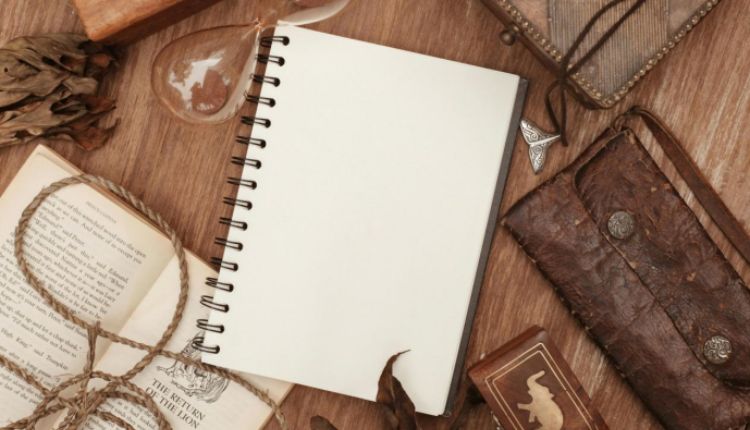In our increasingly digital world, where screens dominate our work and leisure Leather, there’s something profoundly meaningful and almost rebellious about the simple act of putting pen to paper. This tangible connection between thought and physical manifestation creates a unique cognitive and emotional experience that digital devices cannot replicate. For writers, artists, thinkers, and anyone who values introspection, a journal is far more than just a collection of pages—it’s a confidant that keeps secrets, a creative incubator where ideas safely grow, and a personal archive that captures the evolution of one’s inner world. The choice of journal itself significantly influences this relationship, and a leather-bound volume stands apart as a particularly special companion for those who value durability, character, and the rich tradition of the written word.
Why Leather Makes a Superior Writing Surface
The benefits of a leather-covered journal extend far beyond mere aesthetics, though its visual appeal is undeniable. High-quality leather serves as a natural protector, creating a durable shield that safeguards precious pages from the wear and tear of daily travel in bags and backpacks. Unlike rigid covers that can crack or plastic covers that show every scuff, leather possesses a unique combination of strength and flexibility. It’s supple and comfortable to hold, gradually conforming to the user’s grip over time, creating a personalized feel that mass-produced items cannot achieve.
Perhaps the most magical quality of leather is its ability to develop a unique patina with age. Unlike synthetic materials that deteriorate with use, genuine leather actually improves in character over time. Each minor scratch from keys in a bag, every subtle scuff from travel, and the gradual darkening of the grain from natural oils in hands collectively become part of the journal’s story. This evolving surface transforms the object from a mere notebook into a living artifact that visually records its owner’s journey. The leather cover becomes a timeline of experiences, making each journal irreplaceably personal and connecting the owner to their past reflections in a way that a pristine, unchanged object never could.
Key Features for the Discerning Writer
When selecting your ideal writing companion, looking beyond the cover is essential to finding a journal that truly serves your needs. The paper quality represents the foundation of the writing experience—it should have sufficient weight and texture to prevent ink bleed-through, especially important for fountain pen enthusiasts who value smooth ink flow. The paper’s composition also affects how it ages, with acid-free options ensuring your words will remain legible for decades without yellowing or becoming brittle.
The binding method is equally crucial to functionality. Lay-flat designs, such as saddle-stitch or Smyth-sewn binding, allow the journal to open completely flat on any page, eliminating the frustration of fighting against the spine while writing. This attention to construction detail transforms the practical experience of writing, making it seamless and enjoyable rather than awkward and restricted. The cover’s attachment to the pages also impacts longevity—well-crafted bindings ensure pages remain securely in place even with heavy use.
Practical elements, though sometimes overlooked, significantly enhance the user experience. A ribbon bookmark provides an elegant solution for keeping your place, while an elastic closure keeps thoughts secure and protects pages from damage when not in use. Some journals even include back pockets for storing loose notes, tickets, or other ephemera that might inspire future entries. The paper ruling—whether lined, blank, dotted, or grid—should match your intended use, with blank pages inviting freeform sketching and dotted pages providing subtle guidance for writing or drawing without the visual noise of full lines.
The Practicality of Building an Inventory
For authors, writing coaches, workshop leaders, or anyone who regularly incorporates journaling into their professional or creative process, maintaining a personal inventory transitions from being a luxury to a practical necessity. The pattern of constantly purchasing single volumes from retail stores proves neither cost-effective nor efficient, often resulting in inconsistent quality and the frustration of discontinued favorite models when you need them most.
Sourcing a curated collection of high-quality leather journals ensures you always have beautiful and reliable writing tools readily available. This foresight serves multiple purposes: it guarantees you have the perfect journal for your own use when inspiration strikes, provides thoughtful and professional gifts for clients or students, and ensures you have resources available for workshops or creative sessions. This preparedness allows for seamless creative continuity, eliminating the disruptive search for suitable journals when in the midst of productive flow.
Beyond mere convenience, maintaining an inventory represents a commitment to your craft. It signals that writing and reflection are prioritized activities worthy of preparation and investment. Having multiple journals available also allows for thematic organization—using different volumes for specific projects, separating personal reflections from professional brainstorming, or keeping travel journals distinct from daily gratitude practice. This systematic approach to journal management enhances the usefulness of the practice itself.
Conclusion
A leather journal represents far more than a stationery item; it embodies an investment in one’s creative practice and intellectual life. It stands as a tangible commitment to the acts of writing, sketching, and reflection in a world increasingly dominated by transient digital media. By choosing a well-crafted volume with quality paper and durable binding, you’re not merely purchasing a notebook—you’re selecting a partner for your ideas, a witness to your growth, and a repository for your most valuable thoughts for years to come.
The very presence of a beautiful journal can serve as an invitation to write, to think more deeply, and to document life with intention and care. For writing professionals and serious creatives who understand the profound relationship between tools and creative output, building a personal archive of wholesale leather journals represents a strategic decision that supports both their craft and their professional ecosystem. This approach ensures consistency in their tools, provides meaningful gifts for collaborators, and ultimately reinforces their identity as individuals who value substance, longevity, and the enduring power of the written word.






